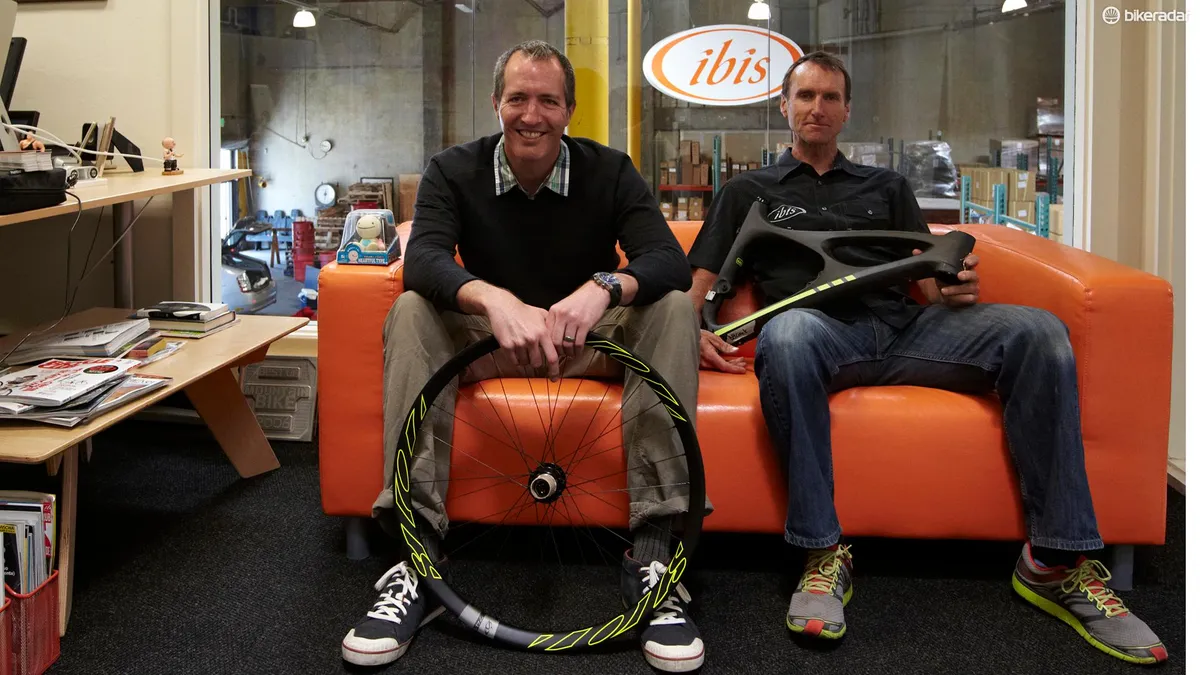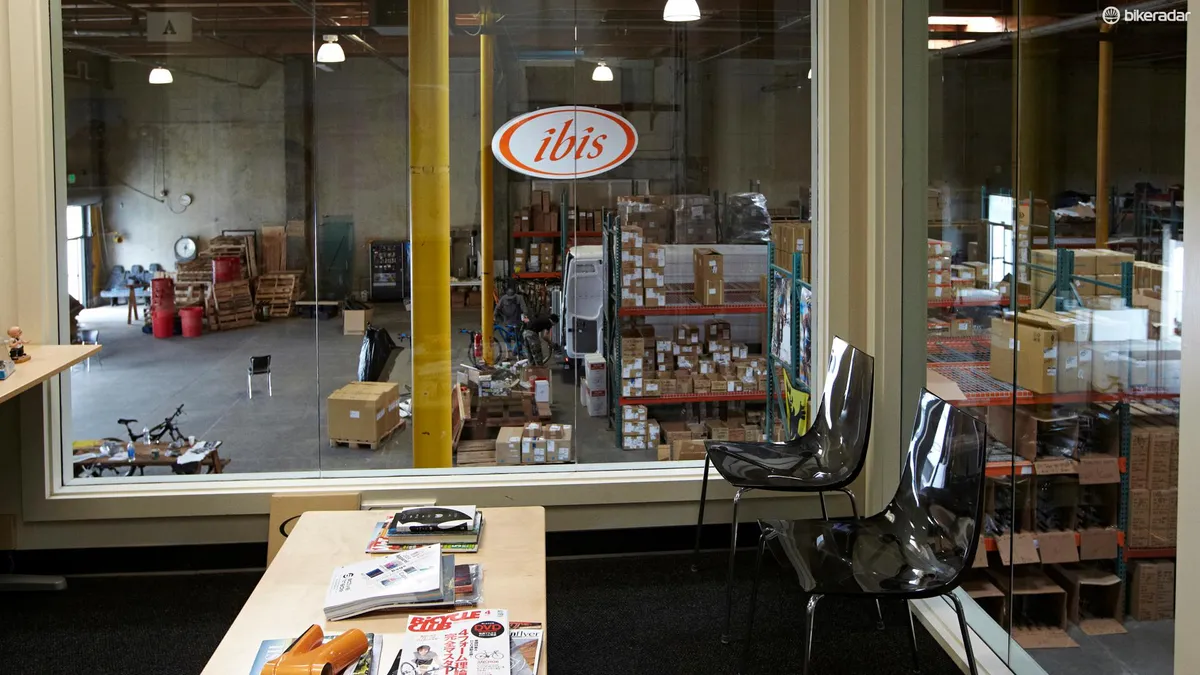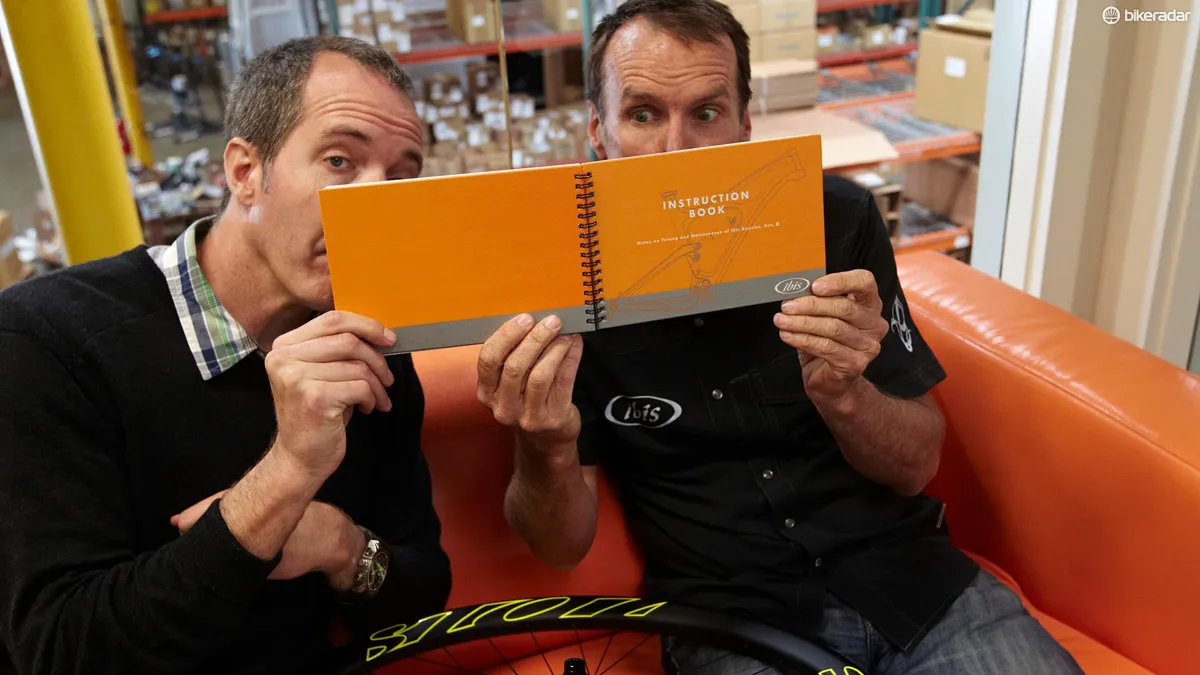In 1980, an impressionable young hippie by the name of Scot Nicol went on a roadtrip to Crested Butte, Colorado with some of mountain biking’s pioneers, including Joe Breeze and Charlie Cunningham.
Bitten by the mountain bike bug, Nicol learned the craft of frame building from Breeze and Cunningham, and went on to design and build his own frames under the name of Ibis Cycles.
In 2000, Nicol sold Ibis to an investment firm, which went bankrupt 20 months later. He teamed up with Hans Heim, Tom Morgan and Roxy Lo, and bought the company back in 2005, with a new vision based around carbon fibre design – and Ibis has been winning fans the world over ever since.
We caught up with the crew from Ibis Bikes - Nicol, Heim, Morgan and engineer/designer Colin Hughes – on a recent visit to Santa Cruz, to hear their thoughts on carbon, adjustable geometry and mountain bike trends and niches.
BikeRadar: Has Ibis always been based in Santa Cruz?
Tom Morgan: When we re-established Ibis, Hans was pretty well settled in Aptos, near Santa Cruz, and I was moving back to the area from Southern California. Since Hans and I were going to be handling the day-to-day operations it made sense to base it near us.
We were actually based in Scotts Valley for the first few years, until we outgrew our space. We moved in to Santa Cruz properly in 2009.
Hans Heim: Ibis is in Santa Cruz because I grew up here and really liked it. I always wanted to live here, but in order to live here gracefully, you need to have a decent job, and that means commuting over to Silicon Valley or having your own business. There aren't many good paying jobs in Santa Cruz.
It's lame to have to spend so much time commuting if you can help it, so the idea to have a bike business in Santa Cruz took hold with me in the early 80s. Specialized almost moved to Scotts Valley around that time - I was working there then and was so bummed when they moved to Morgan Hill (about an hour inland) instead!
Bontrager was in Santa Cruz and just getting going. I bought half of Bontrager and we started to grow the company up from a few people to produce frames in Santa Cruz. So, first it was with Bontrager, then Santa Cruz Bicycles, after Bontrager sold to Trek, and now Ibis Cycles after selling my shares in Santa Cruz Bicycles.
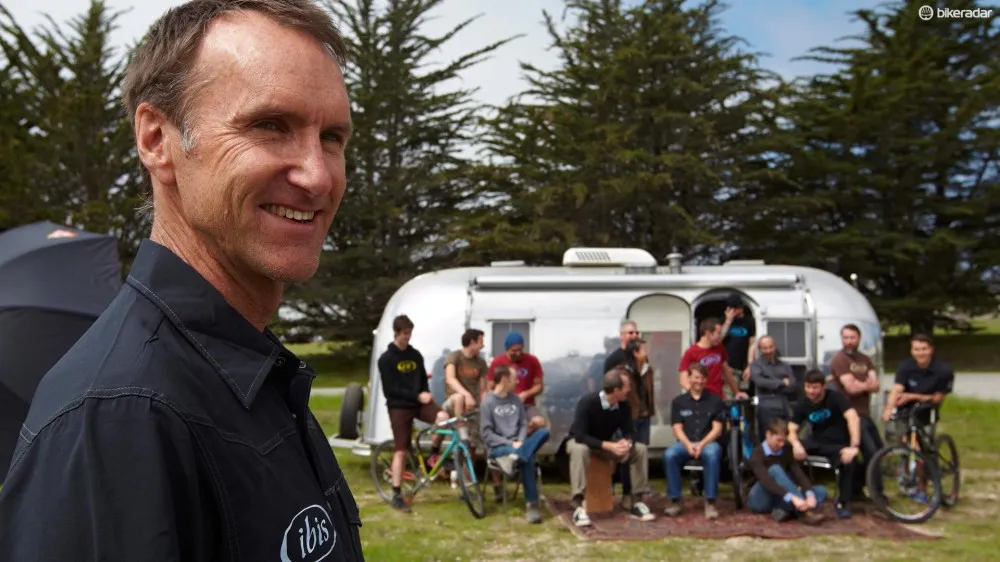
Scot Nicol started Ibis from his garage in 1981. He sold the firm off in 2000, before buying it back in 2005, and relaunching with a focus on carbon fibre
What is it about Santa Cruz that is so attractive for so much of the bike industry to be based here, and nearby?
Scot Nicol: Beyond the fact that there is excellent weather year round, great riding (both road and mountain) and a great cycling culture here, it comes down to businesses giving birth to similar businesses.
Entrepreneurs such as Mike Sinyard (Specialized), Jim Gentes, Jim Blackburn (Blackburn), and Bob Fox (Fox Suspension) launched their now-legendary companies in the area in the 70s and 80s, attracting and nurturing talented people to work for them, some of whom would go on to start their own businesses. Additionally, when people see someone succeed in a business it gives them the inspiration to do it themselves.
We don't have as many hipster frame builders as Portland, but we do have our fair share!
Heim: Having Ibis in Santa Cruz enables us to live, ride and work in one of the best areas around. The moderate climate, with its year-round riding, incredible trails and roads, the natural beauty of the redwoods, oaks, the coastal range, and of course the beach, ocean and coastal towns, is hard to beat.
You are manufacturing affordable carbon rims/wheels now - does this mean your manufacturing costs are coming down and you'll be able to offer some cheaper models in a similar way to Santa Cruz, perhaps?
Morgan: It's hard to significantly impact the total cost of a bike by reducing the cost of the carbon components. There is some money to be saved, but it's not going to change the cost of the hardware - the suspension components, tyres, wheels or drivetrain. Like for like, I'm not sure that the cost savings justifies it.
I do think that there's a place for value-oriented bikes. Focus on function and durability, but possibly less branded specs to save significant cost. This is what our Special Blend kits are about. Internally, we often talk about how if we were paying full retail we would choose a Special Blend kit with our carbon wheels and a dropper seat post upgrades to get the most from a bike.
The future of carbon fibre is more with unglamorous stuff like improvements in the production processes and improved efficiency. Currently a huge amount of time is spent on finishing carbon frames – sanding, putty (to fill small cosmetic blemishes), painting and rework. Reduce or eliminate that time and you would gain more than through using lower cost materials. It's hard to market this kind of stuff, but not only will it make cheaper carbon fibre products they'll be better too.
There will likely be improvements in resin systems to improve impact strength, and more viable thermoplastic materials, but so far the promises have not been met in reality.
Colin Hughes: So far we haven't seen any material advancement yield real world benefits so the gains are still coming from refining our own manufacturing techniques. A lot of people still think carbon frames come popping out of the mould ready for paint, but the reality couldn't be further from that!
Nicol: Also, we already make our own carbon handlebars. As far as more products go, we will continue developing where it makes sense. However, we don't want to get distracted from our core mission of making frames.
The goal of making things like the wheels and handlebars was to improve the experience of owning and riding our bikes. So if we think we have a good idea that will contribute to the experience, we'll pursue it.
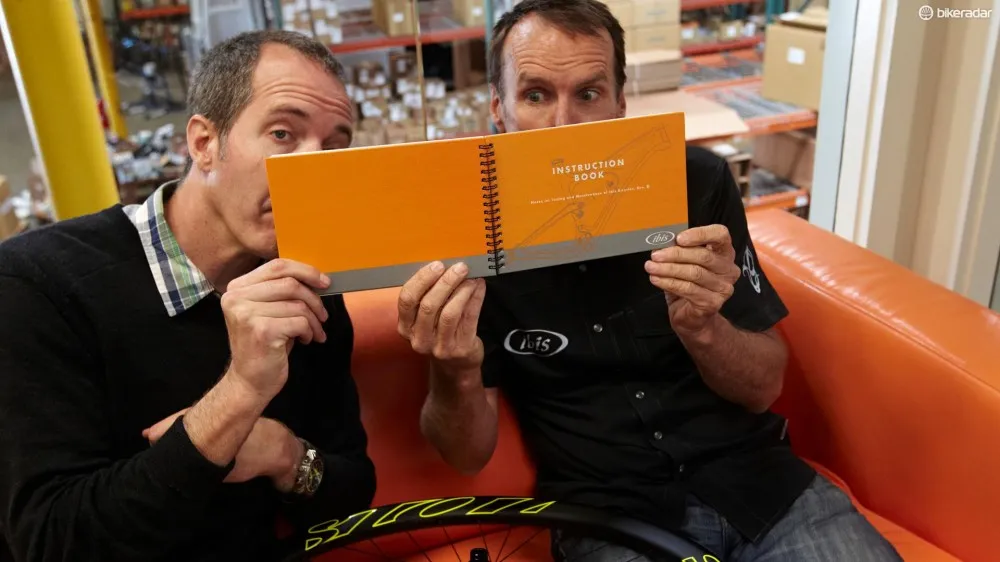
Tom Morgan and Scot Nicol at the Ibis factory in Santa Cruz
What are your thoughts on adjustable geometry bikes?
Nicol: I'm not a fan. There are always going to be compromises. It's been tried before.
When we come up with a new platform for a bike (changing wheel size, travel, head angle, and so on), you take holistic approach. Changes in rear wheel travel need to also come with changes in BB height, and it's not necessarily a linear relationship change. Changes in head angle should go hand in hand with a change in rake, which affects the most important measurement: trail.
We do a lot of 'blind' testing of geometries, not telling people what they're riding, so we avoid the 'slacker is better' or 'N-1' mentality. We ride the bikes in different real world situations and determine what we think is best.
Suspension performance is critically tied to weight transfer, driving force, gearing inputs, shock tune, and so on. Changing one changes the rest. We do a lot of testing on various shock tunes that also affect everything else; Dave Weagle also has a shock dyno to further refine the tune once the frame is built. Bikes are given to our suspension partners to further develop the platform.
I don't think people realise what goes into the development of a well-designed suspension.
As for the Canyon [Strive], it's neat that the travel and geometry is adjustable on the fly with a lever on the handlebars – that makes it better than adjustable travel bikes of the past. The fundamental flaw in that, is thinking short travel bikes automatically pedal better than long-travel bikes. That's true of single-pivot or four-bikes that don't have any anti-squat to combat pedal feedback but not a modern DW-link bike. Our new not-so-top-secret bike will reset the bar in that department.
Adjustable geometry is interesting but we've been able to do that using the fork for years. Now it seems people don't really want it anymore. You know what would be a real improvement and not a gimmick? Having a bike that is lighter on the climbs.
Since that isn't possible and adjustability always adds weight, we'd rather have the lighter weight and simplicity of a bike that pedals well all the time without an extra lever on the handlebars. It's like front derailleurs - they offer great adjustment for going up and downhill but not needing one is even better.
What’s your take on the ever-increasing longer wheelbase geometry that is becoming more popular on the trail market? [It's been observed that the Euro and US geometry approach tend to offer differing theories – shorter, taller and steeper generally, vs longer, lower and slacker]
Morgan: It's interesting. I think terrain and riding styles have shaped how both approaches have evolved, but I don't think either one is necessarily better. The benefits of either one could become a detriment if the rider isn't well matched to it. For example, the long and low approach rewards an aggressive out-of-the-saddle riding style, especially on steeper terrain. Put a less aggressive, mostly seated rider on undulating terrain on the same bike and they could be miserable.
Regardless, we're always trying to figure out how to incorporate some of these changes, but still have a bike that we want to ride. That's what happened with our delayed adoption of 29in wheels. We simply didn't like the way that 29ers rode, and we kept experimenting with geometries until we found a set up that we liked.
You can't just subtract one degree from the head tube angle, add 25mm to the top tube, and throw on a 50mm stem. You need to consider how everything works together.
Hughes: I think the longer wheelbase geometry stems from the death of XC racing in the US. There's no longer a popular race format that rewards steep technical climbing so the importance of that ability in an all around bike had been diminished. Also, improvements in suspension technology over the years have allowed people to go faster over rough ground and the trails are being built with cornering radiuses to match.
As the trails become less tight people are willing to give up nimbleness for stability at speed.
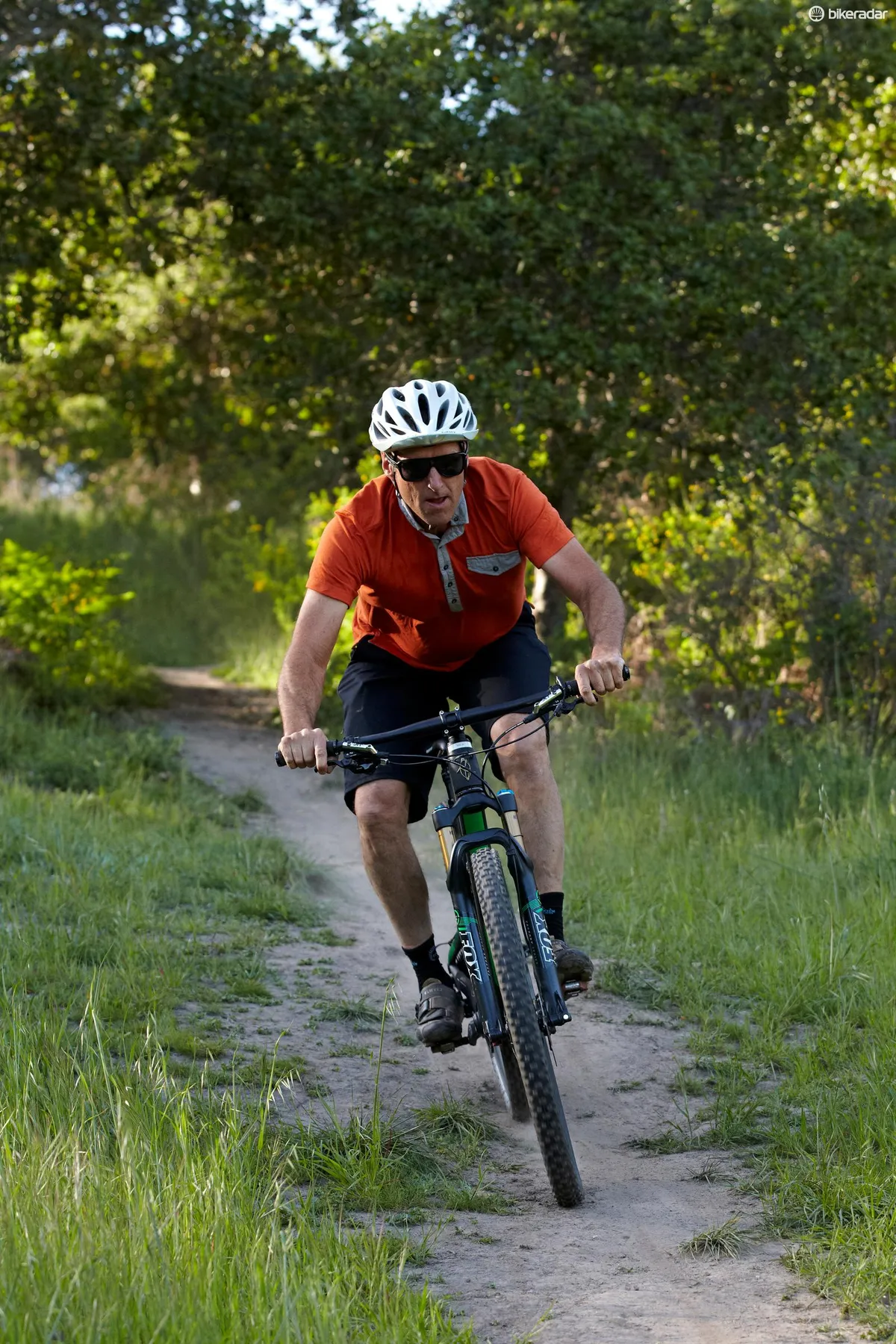
Nicol riding his Ibis on the hills around Santa Cruz
What other trends do you see emerging now that the wheel argument is finally settling down?
Morgan: This is a big question that we could probably discuss for hours. For the sake of brevity, I'll just say that right now fat bikes do serve a purpose, but it's a niche and not a general trend and is probably being over sold right now.
E-bikes are fantastic, but for off road use it's clear that they need to be governed by the same rules as motorised vehicles. I don't really think there is a gray area – at least here in the States, trail access for everyone is at stake.
Related: AngryAsian: Do e-bikes belong on singletrack?
Where would you ride tomorrow. if it could be anywhere, with anyone?
Nicol: Honestly, I'm pretty satiated! I'm just back from three weeks in Moab, Tahoe Park City, and other parts of Utah. And I'm not really a hero worship kind of guy. In May I was riding in Pittsburgh, PA, a town everyone loves to hate. I was there for a few days and rode with a bunch of different people whom I'd never met before. I had the most interesting and fascinating conversations. Totally unexpected and delightful. I'd rather be surprised like that, than let down after some grand expectation of having an interesting conversation with some famous person.
If you weren’t based in Santa Cruz, where would be a good enough base for Ibis?
Morgan: Impossible to answer! How about Flagstaff, Arizona, or Ennenda, Switzerland? Or perhaps Barcelona, Spain, or almost anywhere in Northern Italy? Really not sure!
Hans: There are many other beautiful places that where could be happy – Colorado, Utah, the Alps – but we are here and it's pretty dang good!
This article is the last in a series of interviews with key players of the Santa Cruz bike industry. Read the previous interviews below:

